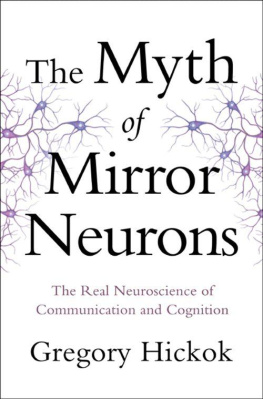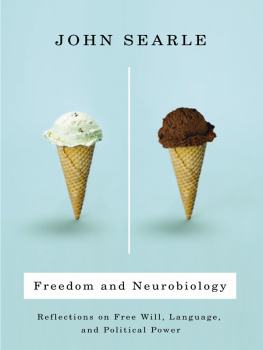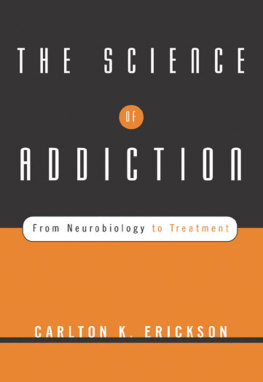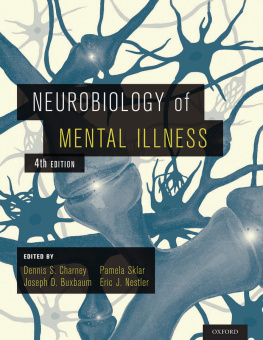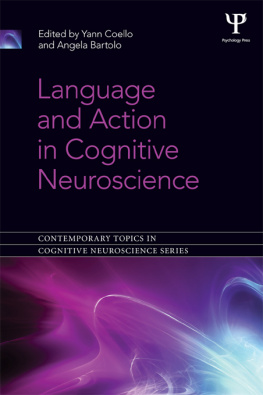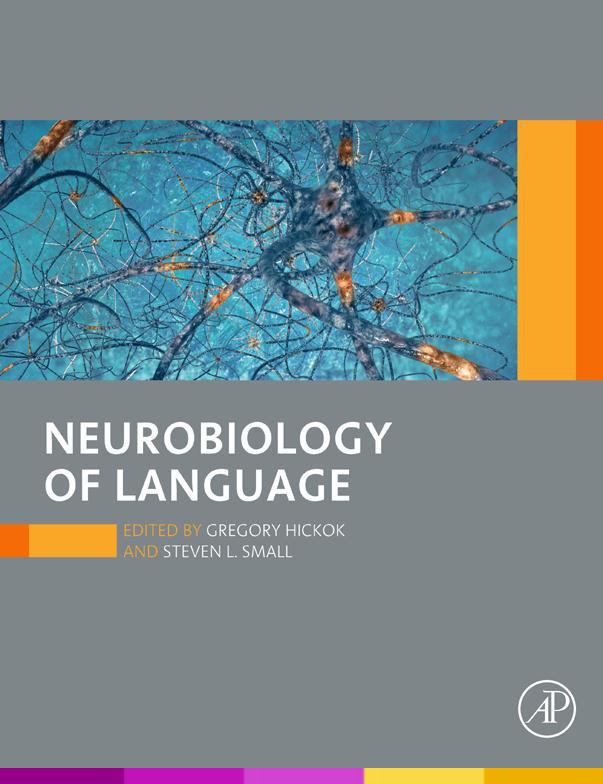Neurobiology of Language
- Section A: Introduction
- Chapter 1. The Neurobiology of Language
- Section B: Neurobiological Foundations
- Chapter 2. A Molecular Genetic Perspective on Speech and Language
- Chapter 3. The Ventrolateral Frontal Region
- Chapter 4. On the Neuroanatomy and Functional Role of the Inferior Parietal Lobule and Intraparietal Sulcus
- Chapter 5. Human Auditory Cortex
- Chapter 6. Motor Cortex and Mirror System in Monkeys and Humans
- Chapter 7. Cerebellar Contributions to Speech and Language
- Chapter 8. The Anatomy of the Basal Ganglia
- Chapter 9. The Thalamus and Language
- Chapter 10. The Insular Cortex
- Chapter 11. White Matter Pathways in the Human
- Section C: Behavioral Foundations
- Chapter 12. Phonology
- Chapter 13. Morphology
- Chapter 14. Syntax and the Cognitive Neuroscience of Syntactic Structure Building
- Chapter 15. Speech Perception as a Perceptuo-Motor Skill
- Chapter 16. Speech Perception: The View from the Auditory System
- Chapter 17. Understanding Speech in the Context of Variability
- Chapter 18. Successful Speaking: Cognitive Mechanisms of Adaptation in Language Production
- Chapter 19. Speech Motor Control from a Modern Control Theory Perspective
- Chapter 20. Spoken Word Recognition: Historical Roots, Current Theoretical Issues, and Some New Directions
- Chapter 21. Visual Word Recognition
- Chapter 22. Sentence Processing
- Chapter 23. Gestures Role in Learning and Processing Language
- Section D: Large-Scale Models
- Chapter 24. Pathways and Streams in the Auditory Cortex: An Update on How Work in Nonhuman Primates has Contributed to Our Understanding of Human Speech Processing
- Chapter 25. Neural Basis of Speech Perception
- Chapter 26. Brain Language Mechanisms Built on Action and Perception
- Chapter 27. The Dual Loop Model in Language
- Chapter 28. MUC (Memory, Unification, Control): A Model on the Neurobiology of Language Beyond Single Word Processing
- Chapter 29. The Neuroanatomical Pathway Model of Language: Syntactic and Semantic Networks
- Chapter 30. The Argument Dependency Model
- Section E: Development, Learning, and Plasticity
- Chapter 31. Language Development
- Chapter 32. The Neurobiology of Gesture and Its Development
- Chapter 33. Development of the Brains Functional Network Architecture
- Chapter 34. Bilingual Development and Age of Acquisition
- Chapter 35. Bilingualism: Switching
- Chapter 36. Neurobiology of Sign Languages
- Section F: Perceptual Analysis of the Speech Signal
- Chapter 37. Phoneme Perception
- Chapter 38. A Neurophysiological Perspective on Speech Processing in The Neurobiology of Language
- Chapter 39. Direct Cortical Neurophysiology of Speech Perception
- Chapter 40. Factors That Increase Processing Demands When Listening to Speech
- Chapter 41. Neural Mechanisms of Attention to Speech
- Chapter 42. Audiovisual Speech Integration: Neural Substrates and Behavior
- Chapter 43. Neurobiology of Statistical Information Processing in the Auditory Domain
- Section G: Word Processing
- Chapter 44. The Neurobiology of Lexical Access
- Chapter 45. A Common Neural Progression to Meaning in About a Third of a Second
- Chapter 46. Left Ventrolateral Prefrontal Cortex in Processing of Words and Sentences
- Section H: Sentence Processing
- Chapter 47. The Role of the Anterior Temporal Lobe in Sentence Processing
- Chapter 48. Neural Systems Underlying the Processing of Complex Sentences
- Chapter 49. The Timecourse of Sentence Processing in the Brain
- Chapter 50. Composition of Complex Meaning: Interdisciplinary Perspectives on the Left Anterior Temporal Lobe
- Chapter 51. Working Memory and Sentence Comprehension
- Chapter 52. Grounding Sentence Processing in the Sensory-Motor System
- Section I: Discourse Processing and Pragmatics
- Chapter 53. Discourse Comprehension
- Chapter 54. At the Core of Pragmatics: The Neural Substrates of Communicative Intentions
- Section J: Speaking
- Chapter 55. Neurobiology of Speech Production: Perspective from Neuropsychology and Neurolinguistics
- Chapter 56. Word Production from the Perspective of Speech Errors in Aphasia
- Chapter 57. Motor-Timing and Sequencing in Speech Production: A General-Purpose Framework
- Chapter 58. Neural Models of Motor Speech Control
- Chapter 59. Neurobiology of Speech Production: A Motor Control Perspective
- Chapter 60. Sentence and Narrative Speech Production: Investigations with PET and fMRI
- Section K: Conceptual Semantic Knowledge
- Chapter 61. The Hub-and-Spoke Hypothesis of Semantic Memory
- Chapter 62. What Does It Mean? A Review of the Neuroscientific Evidence for Embodied Lexical Semantics
- Section L: Written Language
- Chapter 63. Acquired Dyslexia
- Chapter 64. Imaging Brain Networks for Language: Methodology and Examples from the Neurobiology of Reading
- Chapter 65. Developmental Dyslexia
- Section M: Animal Models for Language
- Chapter 66. Rodent Models of Speech Sound Processing
- Section N: Memory for Language
- Chapter 67. Introduction to Memory
- Chapter 68. Neural Basis of Phonological Short-Term Memory
- Chapter 69. Working Memory and Language
- Section O: Language Breakdown
- Chapter 70. Language Development in Autism
- Chapter 71. Symptoms and Neurobiological Models of Language in Schizophrenia
- Chapter 72. Specific Language Impairment
- Chapter 73. Vascular Aphasia Syndromes
- Chapter 74. Psycholinguistic Approaches to the Study of Syndromes and Symptoms of Aphasia
- Chapter 75. Introduction to Primary Progressive Aphasia
- Chapter 76. The Declarative/Procedural Model: A Neurobiological Model of Language Learning, Knowledge, and Use
- Chapter 77. Perinatal Focal Brain Injury: Scope and Limits of Plasticity for Language Functions
- Chapter 78. Motor Speech Impairments
- Chapter 79. The Neurobiology of Developmental Stuttering
- Section P: Language Treatment
- Chapter 80. Neuroplasticity Associated with Treated Aphasia Recovery
- Chapter 81. Melodic Intonation Therapy
- Chapter 82. Constraint-Induced Aphasia Therapy: A Neuroscience-Centered Translational Method
- Chapter 83. Noninvasive Brain Stimulation in Aphasia Therapy: Lessons from TMS and tDCS
- Chapter 84. Imitation-Based Aphasia Therapy
- Chapter 85. Pharmacotherapy for Aphasia
- Chapter 86. Cell-Based Therapies for the Treatment of Aphasia
- Section Q: Prosody, Tone, and Music
- Chapter 87. Processing Tone Languages
- Chapter 88. The Neurocognition of Prosody
- Chapter 89. Environmental Sounds
Guide
Table of Contents
Neurobiology of Language
Edited by
Gregory Hickok
Department of Cognitive Sciences, University of California, Irvine, CA, USA
Steven L. Small
Department of Neurology, University of California, Irvine, CA, USA

Copyright
Academic Press is an imprint of Elsevier


